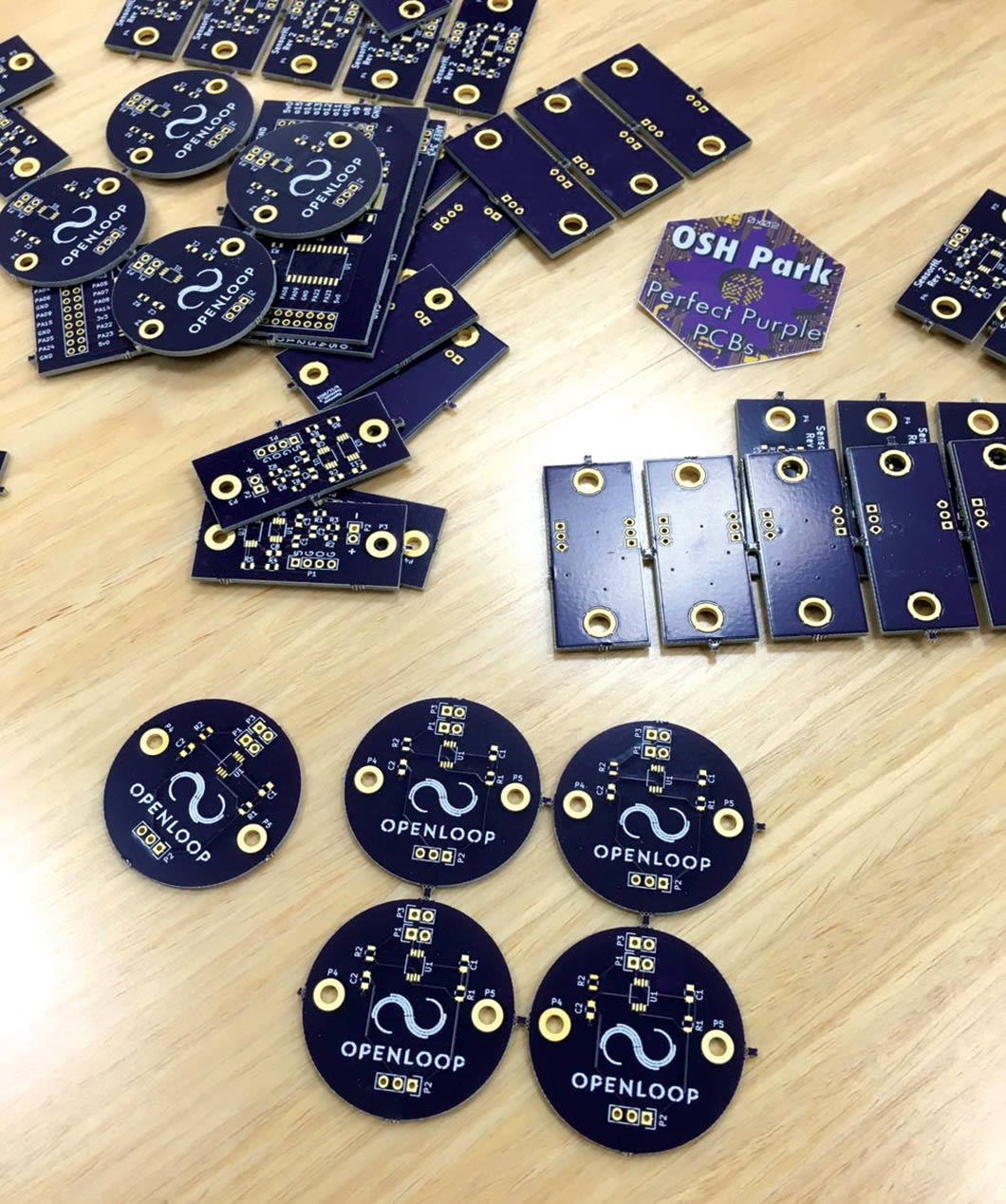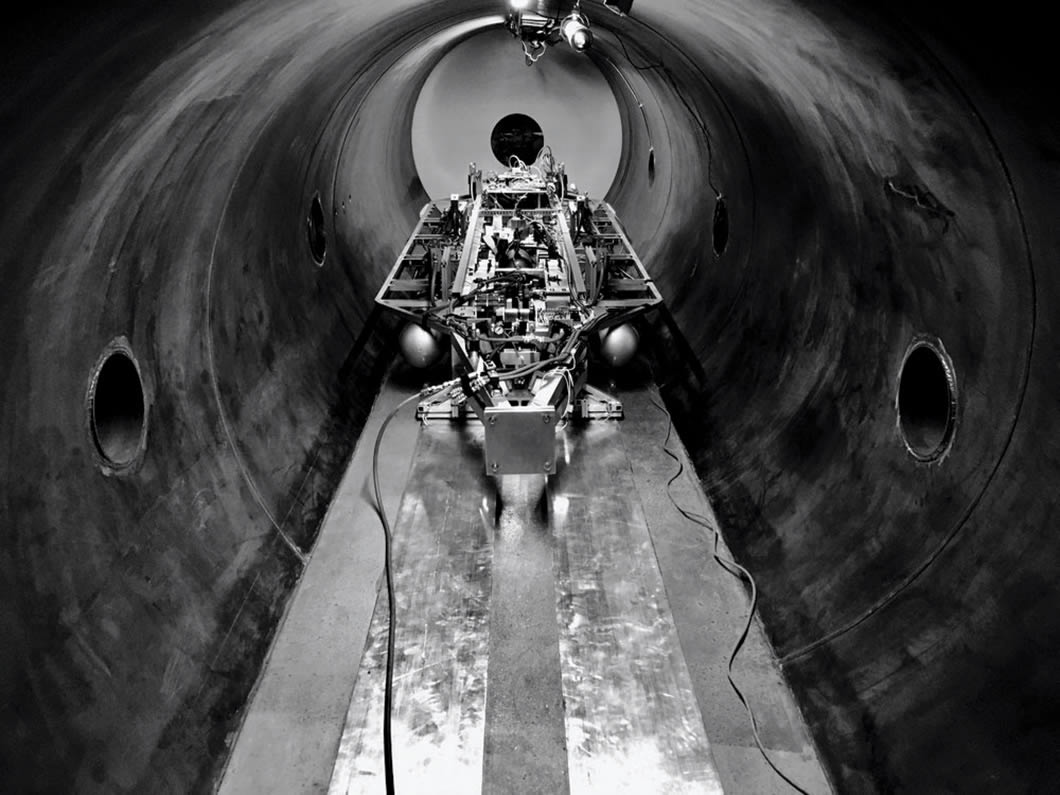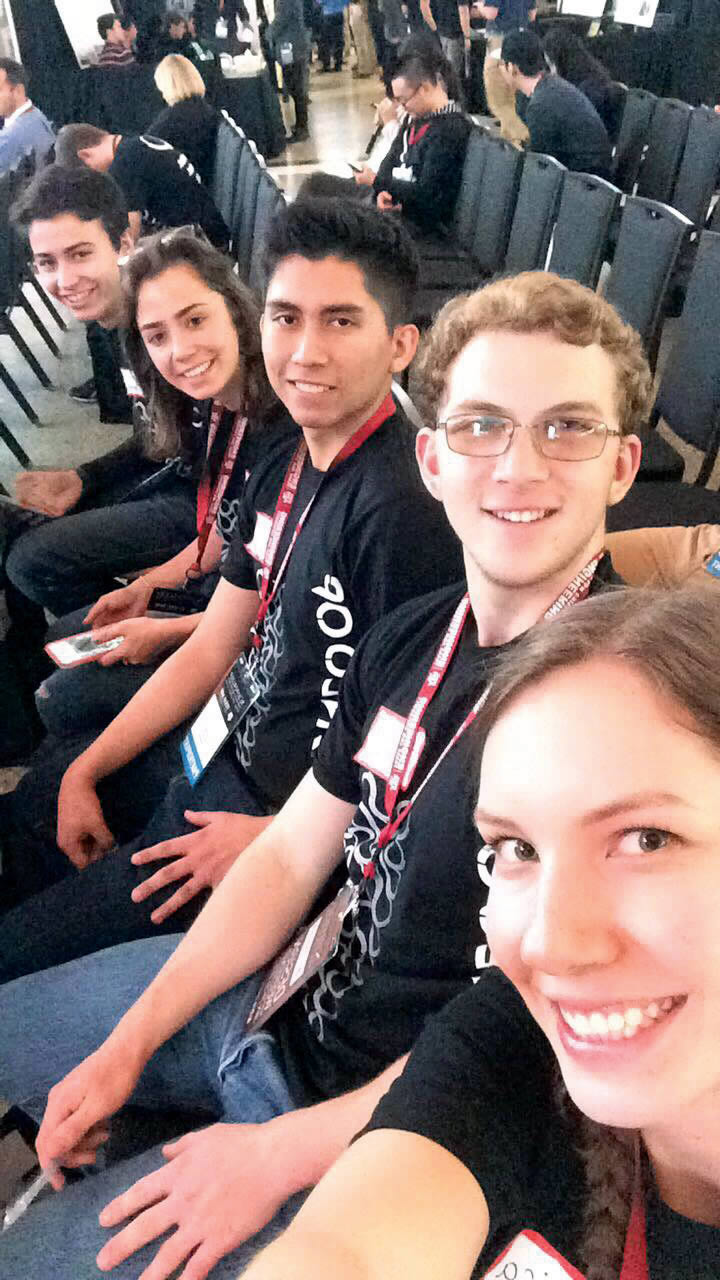Collaboration
Beyond Hype
Mudders join the Hyperloop revolution
Harvey Mudd students worked with a global, multi-university team to build a fully functional, three-fourth scale Hyperloop pod model. The Hyperloop concept was first proposed by SpaceX and Tesla Motors co-founder Elon Musk in 2013. It incorporates reduced-pressure tubes in which pressurized capsules ride on an air cushion driven by linear induction motors. Passengers could travel from Los Angeles to San Francisco in under 30 minutes, radically transforming the speed and safety of passenger mass transit. SpaceX announced a Hyperloop pod design competition in June 2015 as a way “to accelerate development of a functional Hyperloop prototype.”

Team OpenLoop—composed of students from Harvey Mudd, Cornell University, University of Michigan, Northeastern University, Memorial University of Newfoundland (Canada) and Princeton University—was one of 30 teams selected to test its design prototype at the world’s first Hyperloop Test Track adjacent to SpaceX headquarters in Hawthorne, California. The knowledge gained from the competition will be open-sourced.
Here are some highlights from the second year of the project.
March 2016
Construction of various components happened in different locations. The compressed air system was built in Newfoundland, while the air skates were constructed and tested at Northeastern University. Both of these components were transported to Michigan, where the shell and fuselage were constructed and where the three systems were combined. The sensing and controls system were tested and calibrated at Mudd. “Mudd was primarily responsible for controls, the equations and algorithms governing the behavior of the pod. Our goal is controlling the pod and keeping it safe, stable, efficient and comfortable,” said Patrick McKeen ’17, an engineering major who served as the HMC campus lead.
More than 100 teams made presentations during the design competition at Texas A&M University. MIT placed first, Delft University of Technology (Netherlands), second, and University of Wisconsin, third. Team OpenLoop was one of 30 teams approved for the next phase of competition after making adjustments to their design.
What has most impressed me about the the Harvey Mudd OpenLoop team has been their initiative, hard work and dedication. They formed their own team, collaborated with other universities, set their deadlines and completed tasks on time. Since the students hadn’t yet learned the relevant material in formal classroom settings, the majority of their technical work was based on knowledge they learned independently. This type of learning can be difficult and time-consuming and signifies the high level of contribution made by these students. ”
— CHRIS CLARK, PROFESSOR OF ENGINEERING, AND TEAM CO-ADVISOR WITH JAMES HOWARD KINDELBERGER PROFESSOR OF ENGINEERING LIZ ORWIN ’95. GARY EVANS, PROFESSOR OF ECONOMICS AND RUTH AND HARVEY BERRY PROFESSOR OF ENTREPRENEURIAL LEADERSHIP, ALSO SUPPORTED AND ADVISED THE TEAM.
July 2016
During summer, team members from around the world worked to build the hardware in order to compete on SpaceX’s Hyperloop test track in January 2017. Mudders worked on circuitry design and testing, while students in Michigan, Newfoundland (Canada) and Boston worked on the central computing, sensor fusion and housings.
October 2016
The controls system was completed, and students at the other schools continued with other tasks. “We did the vast majority of the work in designing and developing the sensing and controls system, as well as contributing to the overall design and architecture,” said McKeen.

designed for the pod’s sensors
January 2017
During Competition Weekend Jan. 27–29, team pods had to pass a structural and functional vacuum test before being allowed on the track. The majority of the pods used wheeled designs, magnetic levitation and air-bearing suspension to support the pod. The SpaceX tube—six feet tall, 4,150 feet long and an outer-diameter of 72 inches—is able to accommodate all three propulsion systems.
While many teams completed evaluations, including OpenLoop, just three teams were able to test their pods during Sunday’s final: Delft University from the Netherlands, WARR from Munich Technical University and MIT. The OpenLoop team was able to successfully validate the pod’s levitation and performance in vacuum, pass static mechanical and software checks and test the pod on an external sub-track.
Teams that brought entries to the competition but were not allowed to test their designs in the SpaceX test track due to time constraints may return to try again. A final phase of the competition is set for this summer, and all 30 of the teams will be potentially able to compete.

April 2017
The OpenLoop team is featured in a documentary written and directed by Kip and Kern Konwiser and produced by Legendary Entertainment. The film, which debuted on campus April 11, is part of the Konwiser’s docu-series Make it Work about STEM students making a difference. Watch for its release during fall 2017.
